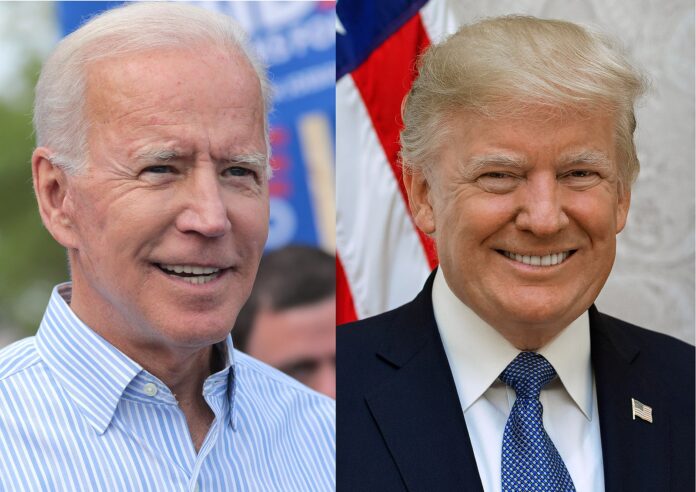President Joe Biden has sent strong signals that his administration will chart a new direction in U.S. health care policy.
Some signals have gotten wide attention like more testing and vaccine distribution under another COVID-19 relief package, this one set at $1.9 trillion which Biden announced January 14. Biden is also expected to ask all Americans to mask up for the first 100 days after his inauguration.
Media reports have paid less attention to equally significant proposals to lower the Medicare eligibility to age 60or a “public option” insurance plan on the Obamacare exchange. President Biden could undo health care reforms by the Trump administration, especially those aimed at more choice and access in the private insurance market, (see related article, page 10).
Biden’s Agenda: Beyond Rollback of Trump Reforms
Health insurance could be in the crosshairs, says Chris Jacobs, president, and CEO of the Jupiter Group.
“Biden’s plans to repeal the ‘firewall’ between employer-sponsored health plans and Obamacare Exchanges would likely result in a mass migration of Americans away from employer coverage,” Jacobs said. “Given that Biden’s running mate, Kamala Harris, previously expressed her desire to ‘move on’ from private health insurance entirely, his planned moves look like the precursor to the full government takeover of health care the Left so desperately desires.”
Biden’s proposals are “surprisingly, illiberal,” says John C. Goodman, president of the Goodman Institute for Public Policy Research and co-publisher of Health Care News.
“Biden proposes to subsidize the (Obamacare) premiums of the 40 percent of higher-income families who currently get no subsidy in the health insurance exchanges. As a percent of income, wealthy buyers would get the same help from government as the near-poor,” Goodman said.
Biden’s support for lowering the eligibility age for Medicare to age 60 could also be problematic, Goodman says.
“According to the most recent Current Population Survey, this age group has above-average income and above-average wealth,” Goodman said. “Moreover, of the almost 30 million people in the U.S. who are currently uninsured, only about 1.7 million are seniors. If these people buy their own health insurance and have below-average incomes, they already are entitled to the same subsidies as everyone else gets. If they make too much income to qualify for subsidies under current law, they face premiums that are kept artificially low. In fact, relative to actuarily fair premiums, this age group is the most favored of all.”
Ways to Roll Back Reform
In choosing how to roll back reform initiatives, the Biden administration will have several options. Like the Trump administration, it can use executive orders and the administrative rulemaking process to make such changes. For example, Trump’s HHS rule allowing states to apply for block grants to help fund Medicaid could be scrapped administratively. However, any attempt to do away with Trump’s rules administratively would likely be subject to lawsuits that could considerably delay overturning them.
Biden administration officials will also have to decide whether they want to allow Medicare patients to continue to use telemedicine after the pandemic subsides. Removing the option could prove very unpopular with seniors and patients with disabilities and would likely face stiff resistance.
The Biden administration could also avail itself of the Congressional Review Act (CRA). Enacted in 1996, the CRA is an oversight tool Congress can use to pass legislation to overturn a rule issued by a federal agency. Under the CRA, if a “Resolution of Disapproval” is passed by both houses of Congress and signed into law by the president, the rule is overturned. Pointedly, the Resolution of Disapproval is not subject to a filibuster in the Senate and only needs to receive a majority vote from all members present. The CRA has been used to overturn a total of 17 rules, 16 of which were eliminated in the 115th Congress (2017-2018).
The Legislative Option
Overhauling the health care system through legislation – the path chosen for enacting Obamacare in 2010 – is another option. However, Democratic losses in the House in November and an almost evenly split Senate will make passing a comprehensive measure difficult and could even prove tricky for nullifying Trump’s rules under the CRA.
The widely unpopular practice of surprise medical bills could be a lot easier to curtail. On December 11, key House and Senate committees announced a bipartisan agreement on legislation establishing a framework for resolving billing disputes between insurers and providers without increasing premiums for patients.
Key Players
A key player for Biden’s new direction is his selection of California Attorney General Xavier Becerra as his secretary of the Department of Health and Human Services (HHS).
Becerra has neither a medical background nor any experience running a large bureaucracy like HHS, but he has never been shy about expressing his views on health care. As California’s AG, Becerra brought many – mostly unsuccessful – challenges to Trump administration regulatory moves aimed at fostering a patient-focused approach to health care.
For longer than two decades, Becerra served in the U.S. House of Representatives as an enthusiastic supporter of a single-payer system, long before Medicare for All gained currency among Democrats.
After congressional Republicans failed to “repeal and replace” the Affordable Care Act (ACA, or Obamacare) when they had majorities in both houses of Congress during the first two years of Trump’s term, the White House relied on a series of executive orders and agency regulatory actions to bring about reforms (see related article, page 5).
Bonner R. Cohen, Ph.D., (bcohen@nationalcenter.org) is a senior fellow at the National Center for Public Policy Research.





















[…] indeed, that Biden’s “verbal stumble” corresponded perfectly with the concerted administration-wide effort to mislead Americans regarding the president’s new vaccination plan. Last week, Vice […]